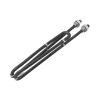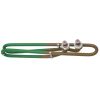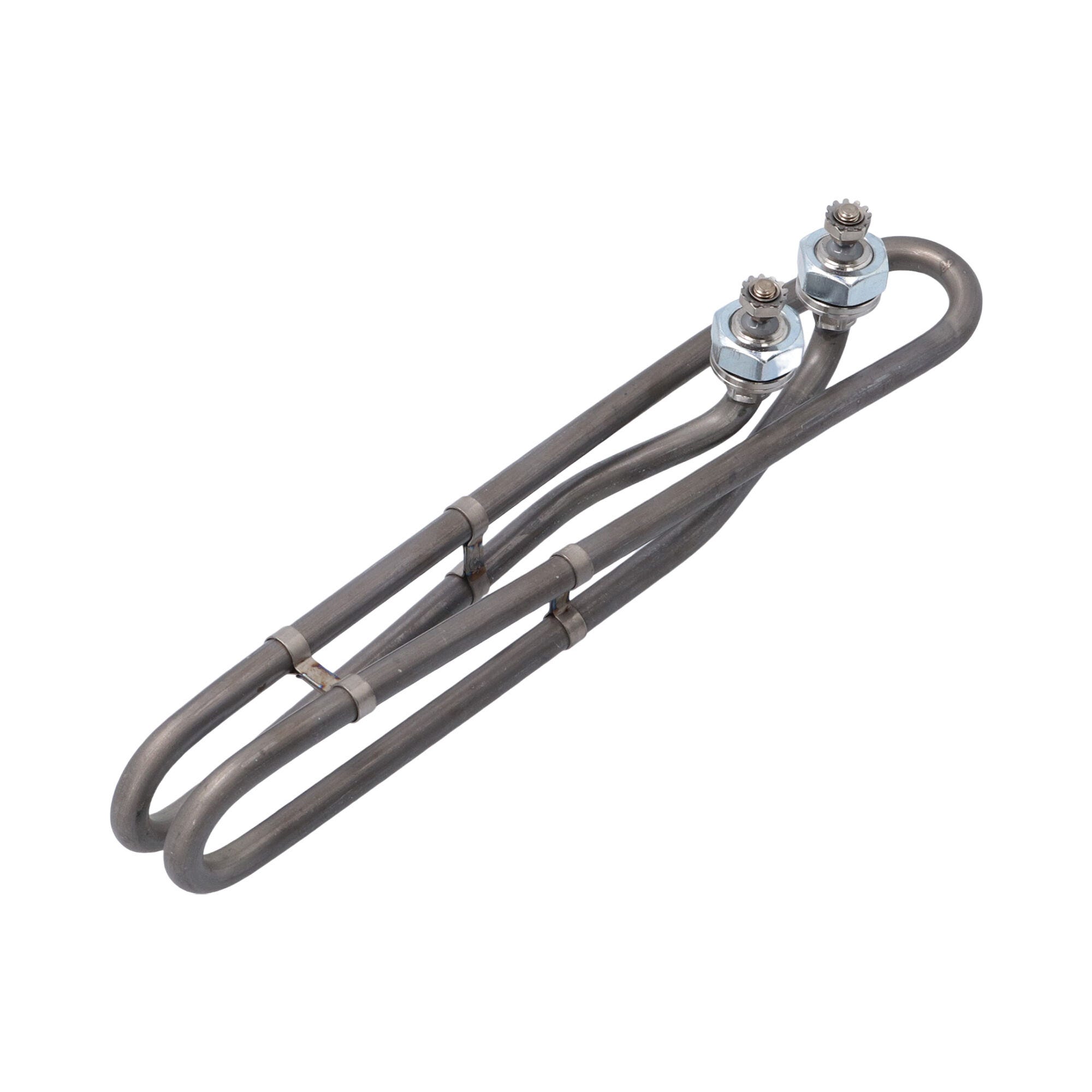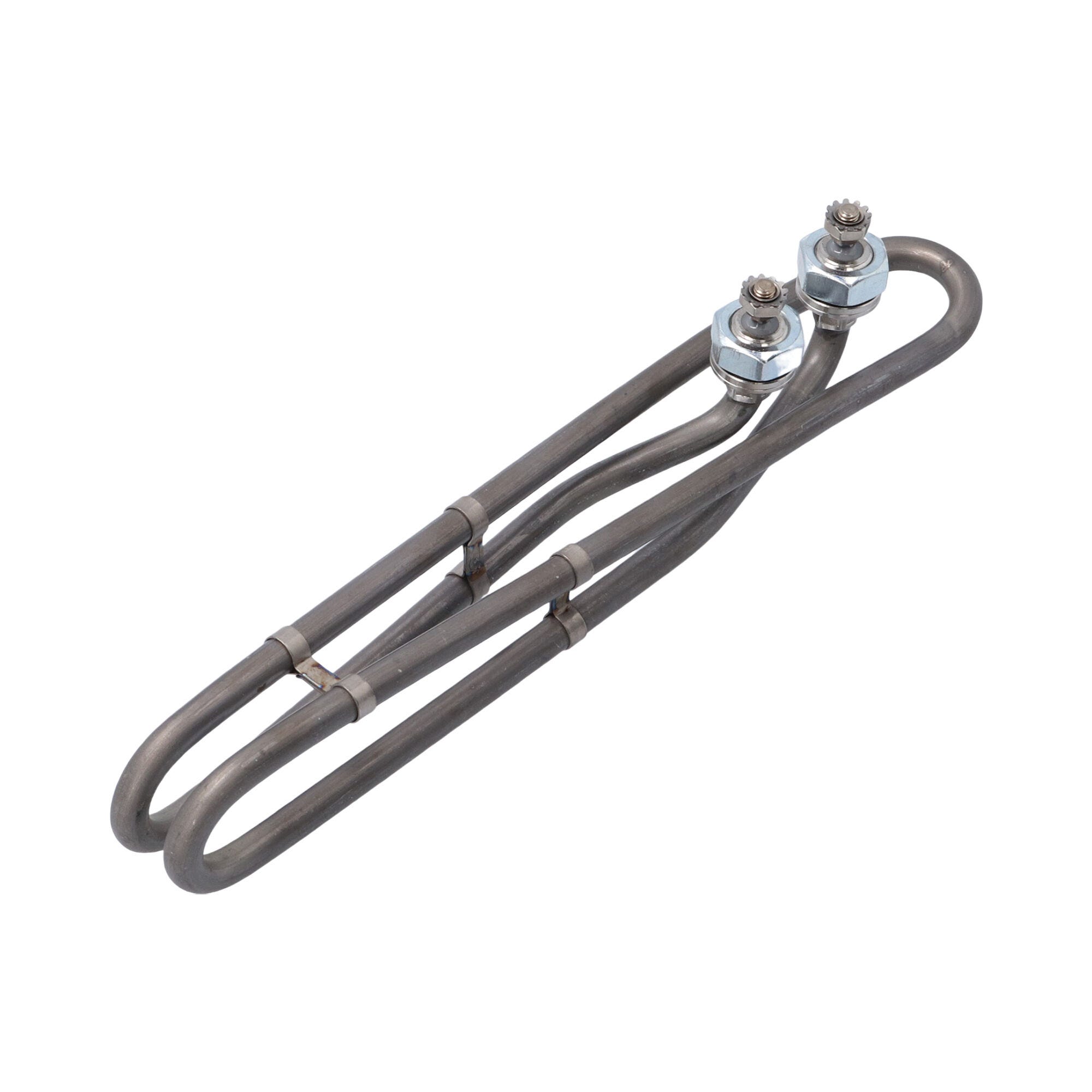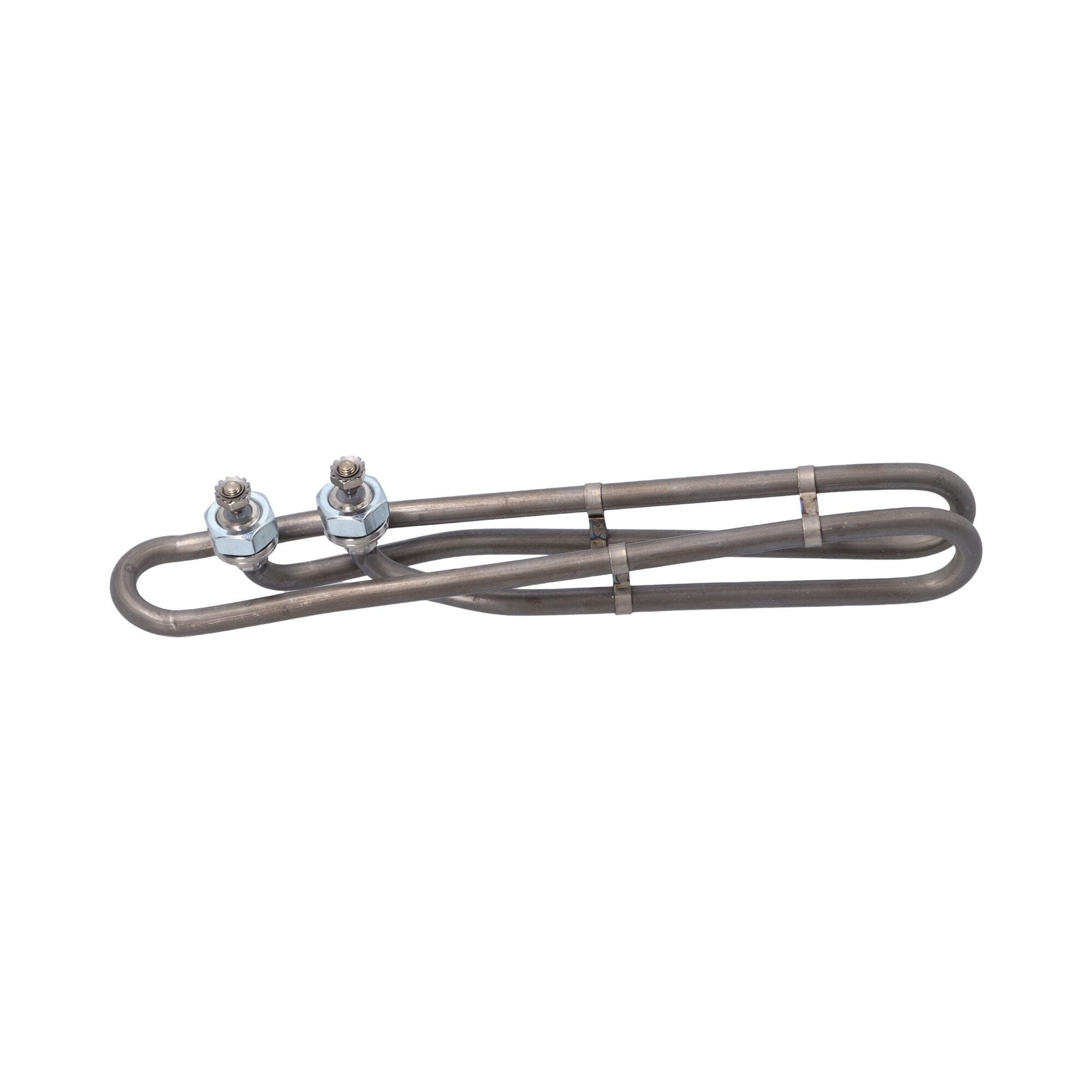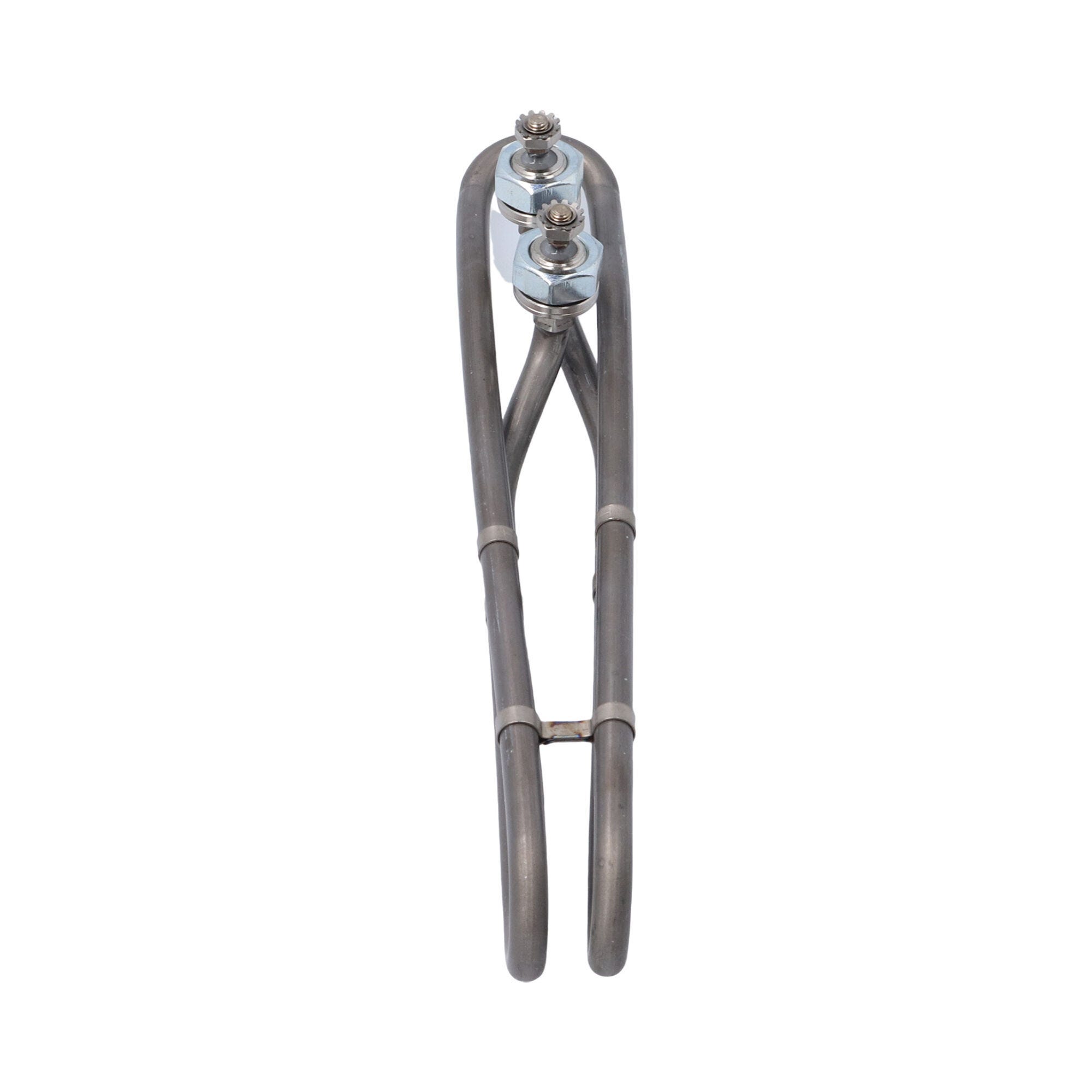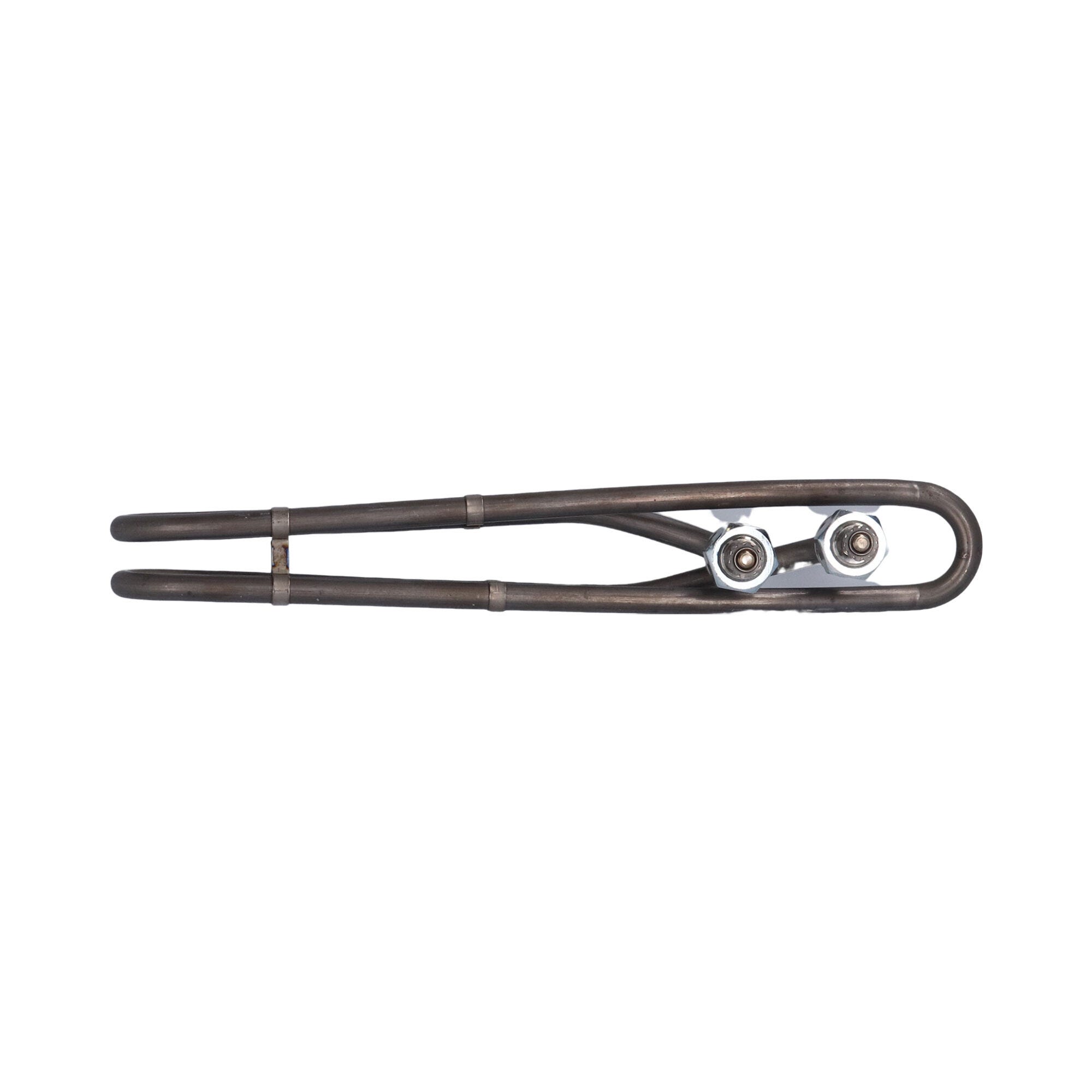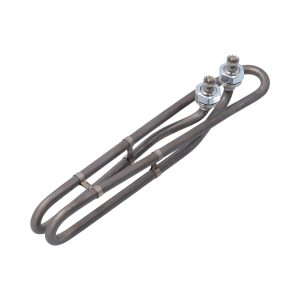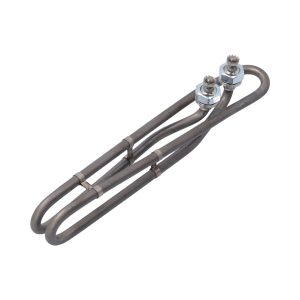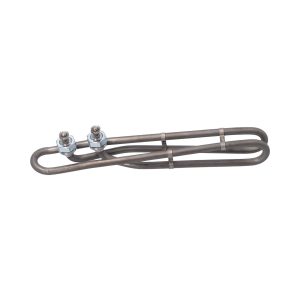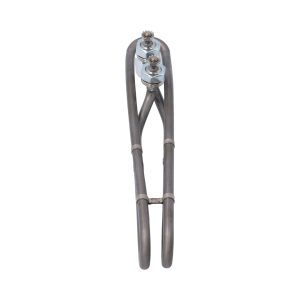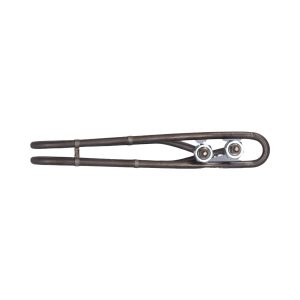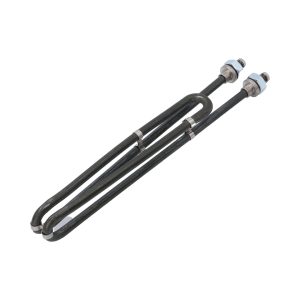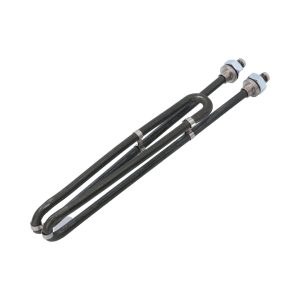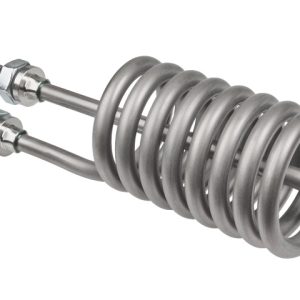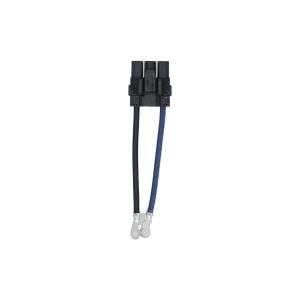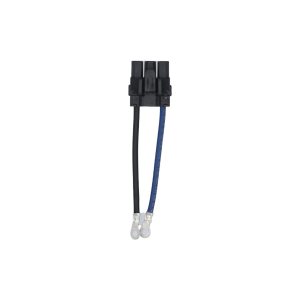5.5KW Titanium Replacement Heater Element for Balboa, Gecko, ACC, Hydro Quip Spa Packs
$63.72
Heater Element, Flo-Thru, Double Bend, M7, Titanium, 5.5kW, 230V, 10″ Immersion w/Swoop
Out of stock
Want to be notified when this product is back in stock?
5.5KW Titanium High-Performance Spa Heater Element
Professional Grade Titanium Heating Solution
As a retailer of hot tub spare parts, I’m offering this premium 5.5KW titanium replacement heater element, engineered for superior performance and longevity in spa control systems including Balboa, Gecko, ACC, and Hydro Quip spa packs.
Product Overview
This professional-grade heating element combines powerful 5.5KW heating capacity with corrosion-resistant titanium construction. The specialized double-bend design with M7 threading ensures optimal heat distribution, while the titanium composition provides exceptional durability and resistance to chemical degradation.
Universal Compatibility
Featuring end-mounted heater connections on a 15-inch tube, this element offers broad compatibility across major spa control systems. This standardized configuration makes it an ideal replacement component for a wide range of hot tub models and brands.
Key Features
- Premium titanium construction for maximum longevity
- Powerful 5.5KW heating capacity
- Double-bend design for superior heat distribution
- Professional-grade M7 threading
- Flow-through design for efficient heating
- 10-inch immersion depth for optimal performance
- Corrosion-resistant properties
Technical Specifications
| Specification | Detail |
|---|---|
| Power Rating | 5.5 kW |
| Material | Titanium |
| Voltage | 230V |
| Immersion Length | 10 inches |
| Total Tube Length | 15 inches |
| Bend Type | Double Bend |
| Thread Type | M7 |
| Design | Flo-Thru |
| Compatibility | Balboa, Gecko, ACC, Hydro Quip |
| Element Type | Standard |
Installation Suitability
This titanium replacement element is specifically designed for hot tubs and spas equipped with control systems from:
- Balboa Water Group
- Gecko Alliance
- ACC (Applied Computer Controls)
- Hydro Quip
Performance Benefits
The titanium construction combined with 5.5KW power output offers significant advantages:
- Superior resistance to chemical corrosion
- Extended operational lifespan
- Faster heating capability
- Excellent scale resistance
- Enhanced durability in harsh conditions
- Optimal performance in high-demand applications
Maintenance Advantages
The titanium construction provides exceptional benefits for long-term operation:
- Reduced scale buildup
- Enhanced resistance to chemical damage
- Minimal maintenance requirements
- Superior longevity compared to standard elements
Alternate Part Numbers
- 2-05-0804
- SI-25-4034-BI-T (Kawai)
- 12-0100F-SPA10 (HydroQuip)
- TEB90015KT-5.5
- AC-4034
Hot Tub Heater Element Replacement; What are the symptoms a hot tub heater element needs replacing?
There are several symptoms that may indicate a hot tub heater element needs replacing. Here are some common signs to watch out for:
Inadequate Heating:
If you notice that your hot tub water is not reaching the desired temperature or is taking much longer to heat up than usual, it could be a sign of a failing heater element. The element may not be generating enough heat or may be malfunctioning, resulting in insufficient heating of the water.
Fluctuating Temperature:
If the hot tub water temperature fluctuates inconsistently, going from hot to cold or vice versa, it could indicate a problem with the heater element. It may be struggling to maintain a steady temperature due to a damaged or faulty element.
No Heating: If your hot tub water remains cold even when the heater is running, it’s likely that the heater element has failed completely. This can occur due to a burnt-out element or a break in the electrical connection.
Tripping Breakers:
If the hot tub’s electrical breaker frequently trips or the GFCI (Ground Fault Circuit Interrupter) is constantly triggered, it could be a sign of a faulty heater element. Electrical issues within the element can cause short circuits or excessive power draw, leading to breaker trips.
Visible Damage:
Inspect the heater element visually for any visible signs of damage, such as cracks, breaks, or corrosion. Physical damage to the element can affect its performance and reliability.
It’s important to note that these symptoms can also be indicative of other hot tub issues, such as problems with the thermostat or the control board. Therefore, it’s recommended to consult a hot tub professional or refer to the manufacturer’s troubleshooting guide to accurately diagnose the cause of the problem.
If you suspect that the heater element is the culprit behind the issues you’re experiencing, it may be necessary to replace the element. Consult the manufacturer’s guidelines and specifications to ensure you select the correct replacement element for your hot tub model.
At Parts4Tubs.com, we offer a wide range of hot tub heater elements, including compatible options for various hot tub brands and models. Replacing a faulty heater element will help restore proper heating performance and ensure an enjoyable hot tub experience.
How to Check if you Have a Bad Heating Element
To check if an electric heating element for a water heater is bad, even when it has voltage but isn't producing heat, you can follow these steps:
- Safety first: Turn off the power to the water heater at the circuit breaker before inspecting or testing the element.
- Access the element: Remove the access panel and insulation to expose the heating element.
- Visual inspection: Look for signs of damage, corrosion, or mineral buildup on the element.
- Continuity test:
- Disconnect the wires from the element terminals.
- Use a multimeter set to the continuity or resistance (ohms) setting.
- Touch one probe to each terminal of the element.
- A reading between 10-30 ohms typically indicates a good element.
- If you get no reading (infinite resistance), the element is likely faulty.
- Ground test:
- Keep one multimeter probe on one of the element terminals.
- Touch the other probe to the metal water heater tank.
- If you get any reading, the element is grounded and needs replacement.
- Voltage test (after reassembling):
- Turn the power back on.
- Set your multimeter to AC voltage.
- Carefully test the voltage across the two terminals.
- You should see the correct voltage (usually 120V or 240V).
If the element passes the continuity test and isn't grounded, but still isn't heating, the problem might be with the thermostat or another component of the water heater.
Hot Tub Heater Element Replacement; How do I replace a hot tub heater element?
Replacing a hot tub heater element is a task that requires careful attention and adherence to safety guidelines. Here is a step-by-step guide to help you through the process:
Preparation:
- Turn Off Power: Before starting any work, ensure that the power to the hot tub is turned off at the circuit breaker. This step is crucial for your safety and to prevent electrical shocks.
- Gather Tools and Materials: Collect the necessary tools and materials for the replacement, including a compatible replacement heater element, wrenches, screwdrivers, multimeter, and Teflon tape (if required).
Removal of Old Heater Element:
- Drain the Hot Tub: Completely drain the hot tub to a level below the heater element. Follow the manufacturer’s instructions or consult your hot tub’s manual for the proper draining procedure.
- Access the Heater Assembly: Remove any access panels or covers to reach the heater assembly. These panels are typically located near the equipment area of the hot tub.
- Disconnect Electrical Connections: Carefully disconnect the electrical connections from the old heater element. This includes disconnecting the power supply wires and any other wiring connected to the element. Take note of the wire colors and their corresponding terminals for reconnection.
- Remove the Mounting Hardware: Loosen and remove any mounting brackets, clamps, or screws holding the heater element in place. Keep track of the hardware for reinstallation.
- Extract the Old Heater Element: Gently slide or wiggle the old heater element out of its housing. Be cautious not to damage surrounding components or plumbing.
Installation of New Heater Element:
- Apply Teflon Tape (If Required): If your replacement heater element requires Teflon tape, wrap the threaded portion of the element with a few layers of tape in a clockwise direction. This will help create a watertight seal when installed.
- Insert the New Heater Element: Carefully insert the new heater element into the housing, aligning it with the mounting holes or brackets.
- Secure the Mounting Hardware: Reattach the mounting brackets, clamps, or screws to secure the new heater element in place. Ensure that it is firmly positioned and properly aligned.
- Reconnect Electrical Connections: Reconnect the electrical connections to the new heater element. Follow the color-coded wires and their corresponding terminals. Double-check the connections to ensure they are tight and secure.
- Test the Heater Element: Before proceeding, ensure that all electrical connections are properly secured. Turn on the power supply and test the heater element using a multimeter to verify voltage and resistance readings (if applicable). Refer to the manufacturer’s instructions for specific testing procedures.
- Close and Seal: Once the heater element is installed and tested, close the access panels or covers and ensure they are securely fastened.
- Refill the Hot Tub: Refill the hot tub with water, following the manufacturer’s instructions or consult your hot tub’s manual for the proper filling procedure.
- Restore Power and Test: Turn on the power supply at the circuit breaker and power up the hot tub. Monitor the heater element to ensure it is functioning correctly and producing heat.
| Brand | Hydro-Quip |
|---|
Related products
Hydro-Quip Elements
4KW Titanium Replacement Heater Element for Balboa, Gecko, ACC, Hydro Quip Spa Packs
Hydro-Quip Elements
Hydro-Quip Elements
Hydro-Quip Elements
Hydro-Quip Elements
Hydro-Quip Elements
Hydro-Quip Elements
Hydro-Quip Elements

